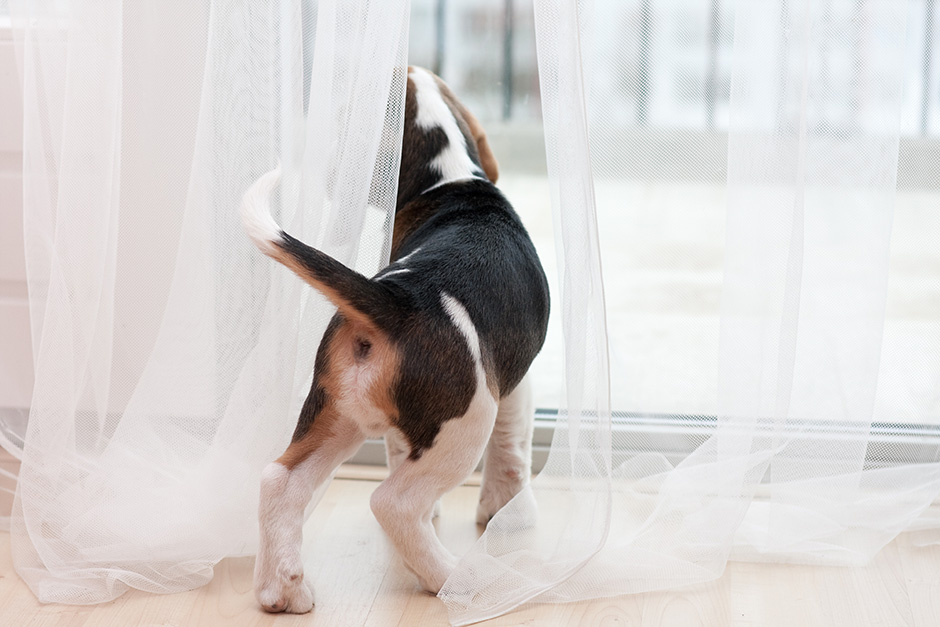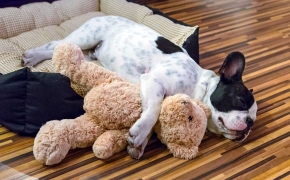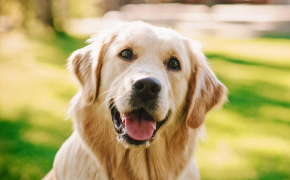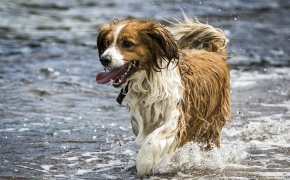Arriving home

The memory of your pet arriving home for the first time might be one of the strongest you’ll ever have. Make this a perfect moment. The whole family has to be involved. Enjoy the experience and don’t overwhelm your pet with too many hugs, not yet anyway
If you have decided to adopt and open the doors of your home (and your heart) to an abandoned animal, the shelter will already have explained many of the steps you need to take. However, if you want to expand on this information, we have a few recommendations of our own to give you.
Best foot forward across the threshold
Let him come in, he might be shy but don’t worry, give him time. Don’t show him around the house like a friend; let him wander around the rooms to smell everything he needs to smell and surprise himself at every turn with all the strange new noises, but try to avoid scaring him. Watch him and enjoy his animal instincts.
Welcome to your home
Following this comprehensive olfactory analysis, once he has reviewed his new home from top to bottom, you can show him his own space.
You should mark out the areas where he can spend his leisure time and where he can do his business, so that he clearly understands he is part of a new family from the word go. It’s best to prepare the home and its furnishings before his arrival.
Firstly, prepare a rest area where he can go to chew on a toy or rest peacefully. Put him in a peaceful area of the home, but without isolating him. Your new companion has to feel part of the family, even when he’s comfortably lying in his bed.
It is also very important to have a space for him to eat and drink.
Find out about his diet and routines before he was adopted and get him gradually used to his new timetable. You will definitely discover a parallel universe around meals. Take your time and don’t skimp on things that will be very important for him.
Designate a space for him to do his business if he is caught short. Adopted dogs adapt easily and quickly mould to their owner’s routine, you won’t have any problem teaching him to do his business outside, unless you have adopted a puppy, in which case you will have to prepare an area covered with newspaper and clean the area where he does his business very well. Beware of using toxic products or any that contain ammonia.
A dog-proof home
Puppies are curious. Avoid accidents and put cleaning products, electrical cables, toxic plants and other objects that may attract his attention, but would be better for him not to touch, out of his reach. Later on, you can teach him how to behave, but for the time being it’s best to anticipate the problems and create a safe environment. If you have adopted an adult dog, this aspect is less important, but for the first few days it is still best to avoid accidents and observe how he behaves in his new home.
One foot in the home and another at the vet’s
Pop in to see the good vet you were recommended, yes the one on your street, and find out everything you need to know about your pet, from vaccinations to socialising, if he’s a puppy. Update his records and don’t forget to microchip him to ensure your friend is completely ready to go for walks without any worries. Depending on the breed you have adopted, there will be different formalities to complete. It’s very important to know everything about your animal to avoid any surprises.
Routine will be your best friend
Routine will be your closest ally and particularly your dog’s. You will avoid many battles and you will all be much happier as a result. Establish routines that fit in with your lifestyle and stick to them, so your dog knows when he will be eating, when he will relieve himself and when he will be playing. You’ll realise that routine will help you understand your new friend better, and vice versa. Definitely don’t forget to cuddle him a bit more now.
Clear rules from the start
Show him how to behave properly from the start and don’t wait for him to develop bad habits before you correct them. Be consistent and patient: it’s the best way to start your relationship on a good footing. If you don’t want him to climb on the sofa, get him used to sleeping in his bed and to respecting the forbidden area from the beginning.
Teach him to wait before eating or going for a walk, and to stop when you tell him to, and don’t forget to use his name. He doesn’t know his name yet. If he has come from a shelter and already has a name, it’s no problem: if you like it, you can keep it, otherwise you can change it.
Use rewards to teach him and the training will become a fun time that will strengthen the bond between you. He will understand what you’re made of and you’ll enjoy a stable and friendly dog.




